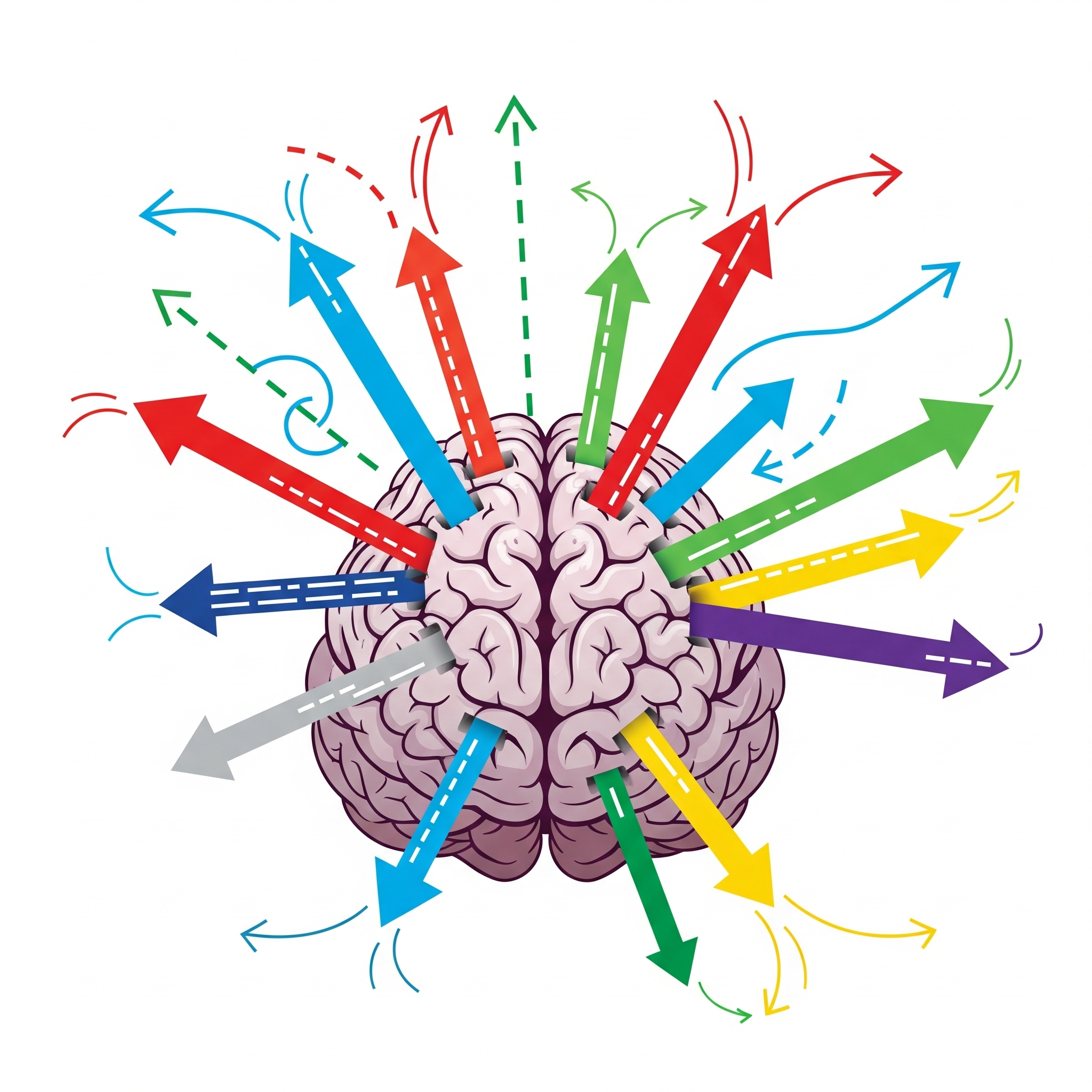You’re writing an email, when suddenly a notification pings. You check it—just for a second—and then you’re back to your draft… except you’re not. Your brain is still half in the email, half wondering about that message, and somewhere in between, your focus evaporates. Sound familiar?
This is the hidden cost of task switching, the habit of rapidly bouncing between different activities. We often mistake it for multitasking, but the truth is, each switch silently drains our attention and energy.
In this article, we’ll unpack what task switching really is, why it sabotages deep focus, and—most importantly—what you can do to protect your mental clarity.
What Exactly Is Task Switching?
Task switching happens when your brain shifts between different tasks instead of staying with one. Unlike true multitasking—which is rare and usually ineffective—task switching means you pause one task, load another into working memory, and then return to the original one later.
Each transition feels small. Replying to a quick Slack message, checking your phone, or even toggling between browser tabs all count. But together, these micro-shifts create mental friction.
Key takeaway: Task switching is not harmless—it creates invisible “switching costs” every time your attention shifts.
Why Task Switching Wrecks Your Focus

1. Your Brain Isn’t Built for It
The brain thrives on flow and continuity. Every time you switch, it must reorient itself, like reopening dozens of tabs in your head. This consumes energy and reduces efficiency.
2. Small Distractions = Big Time Loss
Research shows it can take up to 23 minutes to fully refocus after a distraction. That “quick glance” at your phone might cost nearly half an hour of high-quality focus.
3. Stress Levels Rise
Rapid context changes elevate cortisol, your stress hormone. That’s why a day filled with small interruptions feels more exhausting than a single long stretch of concentrated work.
How Task Switching Steals Energy
Think of your focus like a battery. Every switch is a hidden app running in the background, draining power. By 3 p.m., you wonder why you’re exhausted—even if your to-do list isn’t done.
Personally, I’ve noticed that on days I let notifications rule, I’m mentally scattered. But when I protect longer blocks for one task at a time, I end the day more energized—even with the same workload.
Key takeaway: It’s not always the volume of work that drains us—it’s the way we approach it.
Task Switching vs. Deep Work and Flow
This connects back to Deep Work and Flow State.
- Deep Work requires sustained attention on a cognitively demanding task. Task switching shatters that.
- Flow State happens when you’re fully absorbed and lose track of time. Task switching interrupts flow before it can even take root.
So if you’ve struggled to reach flow or maintain deep work, the culprit might not be motivation—it might be how often you’re switching contexts.
Practical Ways to Reduce Task Switching

Here are strategies you can use right away:
1. Batch Similar Tasks
Instead of answering emails throughout the day, set 2–3 windows to handle them in one block.
2. Use a Focus Timer
Tools like Forest or Pomofocus create short focus sprints and discourage mid-task switching.
3. Turn Off Non-Essential Notifications
Your brain doesn’t need to know about every email or app update in real time.
4. Single-Tab Rule
Keep only one browser tab open per task. This reduces the temptation to switch.
5. Set “Entry Points”
Before switching, note down exactly where you left off. This helps you re-enter quickly if you must change tasks.
When Task Switching Is Unavoidable
Of course, life isn’t lived in perfect focus blocks. Emergencies happen. Sometimes collaboration requires shifting gears.
The key is to distinguish between necessary switching and avoidable distractions. The former is part of modern work. The latter is where you reclaim freedom.
Reflection question: What would change if you reduced avoidable task switching by even 30% this week?
Final Thoughts
Task switching seems small, but it silently drains energy, clarity, and creativity. Protecting your focus doesn’t require working harder—it’s about working in a way that honors how the brain naturally thrives.
Next time you catch yourself toggling between tasks, pause. Ask: Does this switch serve me, or does it scatter me?
If you’re ready to go deeper, I recommend exploring tools that help structure intentional focus blocks—Notion templates and focus timers are excellent starting points.
Remember: True productivity is less about doing more, and more about doing one thing well at a time.





